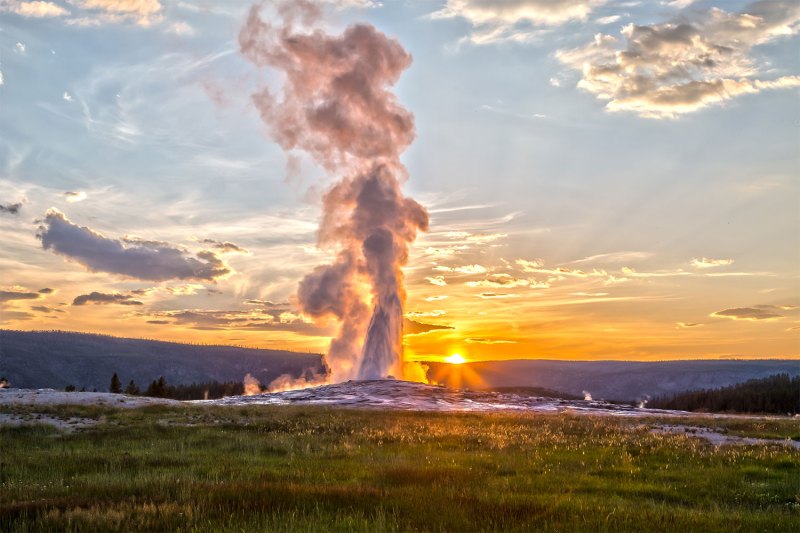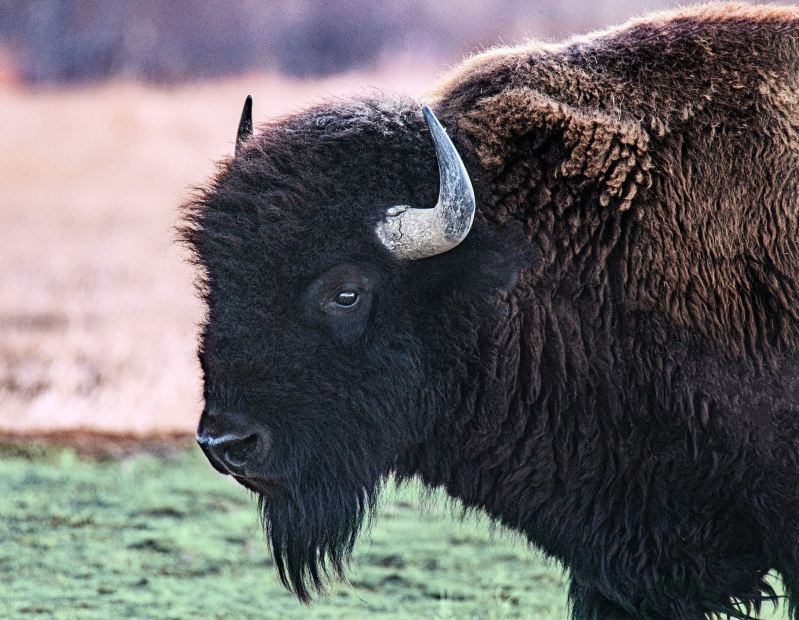In the past few years, tourists have started visiting the best U.S. National Parks in record numbers. More people means more animal encounters — specifically wild animal encounters. It should go without saying that wild animals are, well, wild. That means they can be unpredictable, aggressive, and even dangerous when they feel threatened. Can you blame them? But that hasn’t stopped some people from putting their safety, even their lives, at risk just to snag “the perfect selfie.” Case in point: Yet another tourist who couldn’t resist getting an all-too-close “ussie” with a wild bison, and nearly found herself the victim of another Yellowstone National Park bison attack.
Instagram user yesitisjen captured this brief video snippet of the encounter:
It shows an unnamed woman walking toward a bison, calmly resting in the dirt dbeside a wooden walkway in Yellowstone. She approaches the animal, smartphone in hand, and kneels down mere feet from the bison’s face. It only takes a second for it to become agitated enough to stand up and chase her and her companion back down the boardwalk as they nervously laugh together.
It’s worth noting that it’s extremely rare for bison to attack humans, and this bison showed zero signs of aggression. While the lead-up in the encounter video is short, the bison appears to be minding its own business, just relaxing and living its best life before this tourist rolls up. The NPS notes that bison aggression is marked by snorting, bluff charging, head bobbing, and pawing at the ground. One or more of these signs indicates that they may feel threatened or agitated, and again, this creature exhibited none of them at first.
Most responsible adults know not to bother wild animals. The National Park Service has long been clear about giving all park critters a wide berth. For elk, deer, bears, wolves, and bison, it recommends a 25-yard clearance. Not sure how far that is? Stick out your arm, and throw your nearest bison a thumbs-up. If your thumb blocks out the entire creature, you’re at a safe distance. If not, it’s time to back away.
This video represents another textbook example of “f**k around and find out,” National Park Edition. Too-close animal encounters have become so commonplace in National Parks that it seems a new incident is reported almost weekly. Earlier this year, Yellowstone officials were forced to issue a stern warning, pleading with visitors to drive slowly, give every animal plenty of room to roam, and never interfere with wildlife. It’s prompted some experts to share their tips on how to co-exist and photograph wildlife safely.
The rise in near-miss and even deadly National Park wildlife encounters even prompted the creation of an entire Instagram account, touronsofyellowstone (a portmanteau of “tourist” and “morons”), to chronicle the epic stupidity of tourists getting too close to Yellowstone’s animals. Judging by its more than 400,000 followers, it seems many of us enjoy the schadenfreude of watching clueless tourons get their comeuppance.

Where is Yellowstone National Park?
Yellowstone National Park’s 3,500 square miles are tucked mostly into the northwest corner of Wyoming, with roughly 3% of its land mass in Montana and another 1% in Idaho. If you’re planning a trip to Yellowstone, it’s easily accessible via airports in Cody and Jackson, WY; Bozeman and Billings, MT; and Idaho Falls, ID. Once on the ground, there are five entrances, making the park extremely drivable to explore by car.




